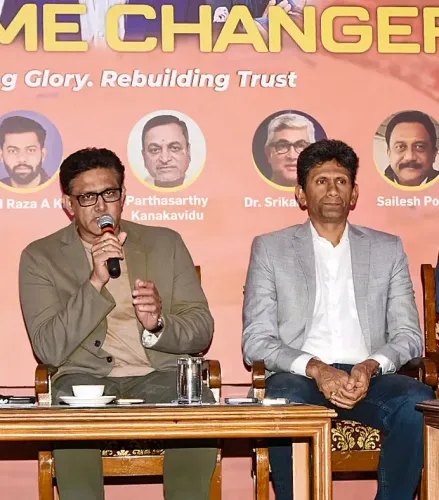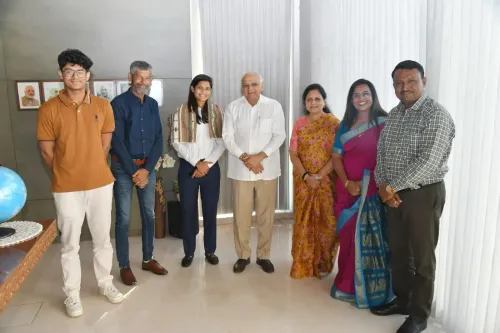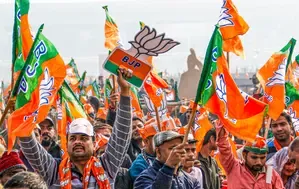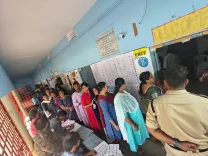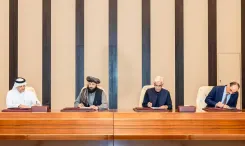Is Seemanchal's Religious Loyalty More Important Than Poverty?

Synopsis
Key Takeaways
- Seemanchal has a significant Muslim population, influencing electoral outcomes.
- Local issues and religious loyalty play crucial roles in voting behavior.
- The region has low development indicators and faces frequent flooding.
- Political parties leverage these dynamics to form alliances and garner support.
- Volatility in party alignments is common, reflecting broader political trends.
New Delhi, Nov 10 (NationPress) The northeastern region of Bihar, encompassing the districts of Kishanganj, Katihar, Purnia, and Araria—collectively referred to as the Seemanchal area—has emerged as a critical battleground in the state's political landscape due to its unique demographics, local challenges, and the instability of traditional voting alliances.
This area consists of 24 Assembly constituencies, representing about 20 percent of Bihar’s total of 122 constituencies participating in the second phase of the state elections on Tuesday.
With a total of 243 seats in the Bihar Legislative Assembly, elections for 121 constituencies have already taken place on November 6.
On November 14, the counting of votes will occur. The Seemanchal region, which shares borders with West Bengal and Nepal, has a significantly high Muslim population, making its Assembly seats crucial in closely contested elections.
According to the 2023 caste-based survey data, Muslims constitute approximately 17.70 percent of Bihar’s population. However, their influence is particularly pronounced in 47 of the state’s constituencies.
In Seemanchal, the Muslim demographic is estimated at around 47 percent, a segment that Asaduddin Owaisi, leader of the All India Majlis-e-Ittehadul Muslimeen (AIMIM), aims to appeal to once more.
For years, the politics in Seemanchal has been viewed through the lens of Bihar's broader political dynamics, where parties have converted local religious and caste affiliations into reliable voting blocks. Following the Mandal politics of the 1990s, the electoral calculus in Bihar has largely revolved around support from OBC and EBC groups, Dalits, upper-caste votes, and Muslim ballots.
The unique profile of Seemanchal is characterized by high Muslim density, poor development metrics, livelihoods driven by migration, and recurrent flood-related challenges, resulting in a blend of identity-based and issue-focused politics.
In the 2020 elections, the Bharatiya Janata Party (BJP) secured eight seats, while its ally, Janata Dal (United), obtained four seats.
The Mahagathbandhan coalition's Congress party managed five seats, with the Left and Rashtriya Janata Dal (RJD) winning one seat each.
The AIMIM achieved victories in five seats, although four of its MLAs later defected to the RJD. This election cycle, Owaisi has declared his intention to contest 28 seats, 15 of which are located in Seemanchal.
During the 2020 Assembly elections, AIMIM put forth 20 candidates, with 25 percent winning. In the Jokihat constituency, the RJD lost to AIMIM by more than 7,000 votes, while in Baisi, Owaisi’s party triumphed over the BJP by approximately 16,000 votes, with Tejashwi’s candidate acquiring over 38,000 votes.
In Baisi, the RJD contended that AIMIM siphoned off anti-incumbency votes. In Bahadurganj, the AIMIM candidate defeated the closest competitor from the Vikassheel Insaan Party (VIP) by over 45,000 votes, relegating the Congress nominee from the Mahagathbandhan to third place with around 30,000 votes.
In Kochadhaman and Amour, AIMIM candidates also won comfortably, with margins exceeding 36,000 and 52,000 votes, respectively, while the RJD and Congress finished third in these constituencies with 26,000 and nearly 32,000 votes.
Conversely, in Kishanganj, the Congress candidate won by a mere 1,381 votes over the BJP's runner-up, while AIMIM garnered close to 42,000 votes.
In other areas like Kasba, Pranpur, Manihari, and Chhatapur, AIMIM candidates struggled, sometimes attracting as little as 0.25 to 2 percent of the vote.
However, AIMIM's wins did not translate into stable organizational strength, as many MLAs either defected or changed allegiances shortly after the elections, highlighting the volatility at the local level and the influence of local brokers and personalities.
This time, despite Owaisi's appeals to ally with the Mahagathbandhan, Tejashwi has remained unresponsive, likely fearing that bringing AIMIM on board might alienate Yadav voters.
Bihar's caste census indicates that Yadavs constitute about 14.3 percent of the state's population. Consequently, the Seemanchal region is poised once again for a multi-faceted electoral contest on Tuesday.

